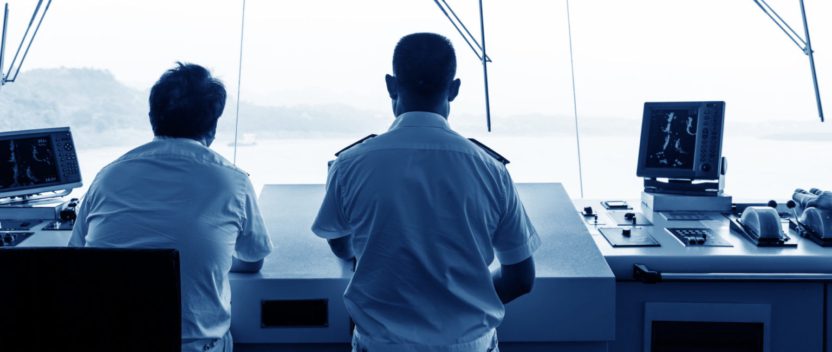Keep an eye out for crosswinds…
First the good news. From a demand side perspective, the outlook for shipping over the next five years isn’t too bad, especially compared to the last five years. Research by Maritime Strategies International into Compound Annual Growth Rates based on its assessment of demand in a number of major shipping sectors suggest crude tankers, containers, chemical tankers all have better prospects over the next five years.
And as Dr Adam Kent of MSI explains, cargo growth only tells one side of the story and when this growth is converted into shipping requirements, factoring in distances, speed, port times, waiting time, ballast ratio etc, the picture becomes even more positive for crude tankers and containers, chemical tankers and LNG carriers.
“We can see a favourable outlook for the long haul product tanker story. Middle East product exports will continue to grow, driven by new and expanding refineries in Saudi Arabia, Oman, UAE, Qatar and Turkey,” he says. “Whilst Europe and non-OECD Asia are forecast to remain the primary destinations of Middle Eastern products exports, we expect (mostly east) Africa and Latin America share to grow. OECD Asia sees stable imports with growth focused on non-OECD regions in Asia.”
Another sector in which MSI expects to see improvements is for 8,000 TEU containerships. These have been sucked into the liquid charter market and are therefore witnessing earnings at levels only marginally above vessels that are a quarter of their TEU capacity. However, Kent doesn’t expect this to last and it will be the 8,000 TEU sector that shows signs of improvement first.
This belief is based on evolution of deployment strategies and that the container cascade will remain efficient. In 2011 these vessels were primarily servicing the Far East–Europe and the Transpacific lanes only; today they are operating on a large number of trades and increasingly on North-South routes.
“The rapid evolution in port infrastructure developments is an area that MSI monitors in some detail but has to be included to accurately forecast future cascade developments,” he adds. “Through this process we believe 8,000 TEU vessels will be calling at a lot more ports over the next couple of years.”
Some of the best opportunities from a demand perspective can be found in the specialist sectors. For example, looking at the aggregated demand for North East Asian chemical imports, MSI is forecasting significant growth of shipping demand requirements over the course of next few years for organic chemicals with growth also exhibited by inorganics and vegetable oils.
Now, the slightly worse news. The supply side is the source of most problems for shipping and despite some recent corrections, the orderbook still casts a long shadow over most sectors. Across all the main commodity sectors the orderbook significantly outstrips the ageing fleet with multi-purpose, Ro-Ro and car and truck carriers the only sectors where there is a better balance of replacement tonnage requirements.
Ro-Ros have been left out in the cold for the last decade, says Dr Kent, with newbuilding prices and the cost of bunkers preventing owners ordering new ships, though with these restraints lifted we are finally beginning to see some orders.
“We do not think all vessels in the orderbook will materialise. Currently over 25% of the 2016 orderbook is set to be delivered by Tier 2 or Tier 3 shipyards, falling to nearer 20% in 2017. We are forecasting that these yards will see significant volumes of cancellations,” he says.
If the same analysis is repeated purely on dry bulk carriers, over 50% of tonnage scheduled to be delivered this year will come from Tier 2 and Tier 3 shipyards.
However, for once the industry is trying to help itself. There has been very little ordering in the first half of 2016, when compared to 2015. Apart from 30 very large ore carrier orders booked this year, most other sectors have seen either negligible to no levels of contracting in 2016.
The industry has also seen a fall in the average age of vessels scrapped. The average age for bulkers scrapped in 2016 to date is now at a historical level based on 1990 to 2015 data. Average age at scrapping for containerships has fallen considerably from the median and there is evidence to suggest other sectors are also following by scrapping younger tonnage as the markets turn and sentiment becomes more negative. MSI also thinks that the ratification of the BWM Convention, coupled with rising scrap prices in 2017 onwards will force the hand of some owners.
In terms of the current earnings cycle, MSI believes that tankers have passed the peak of the market and are currently on the downward slope, with LPG leading the way. But it concludes that the offshore sector still has a little way until it reaches the bottom of the current earnings cycle.
“Then we have a number of vessel types that are at or near the bottom of their respective earnings cycle. On the upwards trend we have chemical tankers and at the top Ro-Ros. But of course what goes up must come down and in three years’ time Ro-Ros will have passed their peak and crude tankers will be near the bottom of their cycle.”
MSI believes that OSVs will have finally found their floor with almost all other sectors either at the foothills or climbing up the upward slope of the next earnings cycle with chemical tankers towards the top of the cycle but it has words of warning for anyone considering fresh orders.
“We are currently in a situation where there is a glut of shipyard capacity, with many shipyards underemployed. The consequence of this is that if any sector shows a sustained recovery the yards will be well positioned to take orders and deliver lots of ships promptly, within two years,” says Kent.
The speed at which shipyard capacity is able to react to increased contracting volumes was witnessed during the eco ship ‘boom’ of 2013. After a rapid reduction in shipyard capacity, after the Chinese-led contracting explosion which ended in 2008, shipyard capacity was shown to be very elastic and responsive and increased again to meet the requirements of owners wanting to place new orders.
This may mean that the industry will see a something of a structural change in the shipping cycles going forward, with shorter, sharper cycles with any bull run culled by the relative rapid delivery of legions of ships via the new dynamic shipyard capacity landscape.


